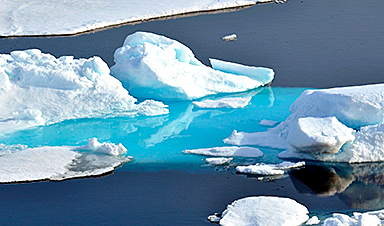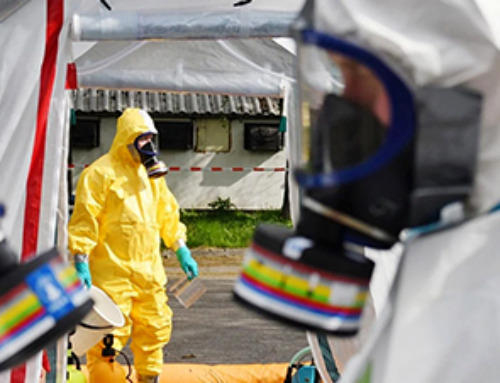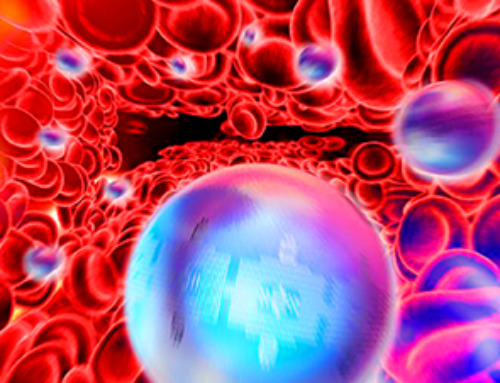According to scientists, the Amundsen Sea Embayment, which is the fastest-changing region in Antarctica, has experienced a loss of more than 3,000 billion tons of ice in 25 years. If all this ice were to be stacked, it would tower over 2 km tall, which is equivalent to 7.4 times the height of the Shard in London. Alternatively, if it were to cover Manhattan, it would stand at a staggering 61 km, or the equivalent of 137 Empire State Buildings stacked on top of each other.
The Amundsen Sea Embayment in West Antarctica is home to 20 major glaciers that cover an area more than four times the size of the UK. These glaciers play a crucial role in determining the level of the world's oceans as they hold vast amounts of water in snow and ice. If all of this were to drain into the sea, it could cause global sea levels to rise by over one meter.
The research, led by Dr. Benjamin Davison at the University of Leeds, calculated the "mass balance" of the Amundsen Sea Embayment. This describes the balance between the mass of snow and ice gain due to snowfall and mass lost through calving, where icebergs form at the end of a glacier and drift out to sea.

Plane landing in the Amundsen Sea Embayment. Credit: University of Leeds
Dr. Davison, a Research Fellow at the Institute for Climate and Atmospheric Science at Leeds, said: "The 20 glaciers in West Antarctica have lost an awful lot of ice over the last quarter of a century and there is no sign that the process is going to reverse anytime soon although there were periods where the rate of mass loss did ease slightly.
"Scientists are monitoring what is happening in the Amundsen Sea Embayment because of the crucial role it plays in sea-level rise. If ocean levels were to rise significantly in future years, there are communities around the world who would experience extreme flooding."
The research has been published in the scientific journal Nature Communications.
Importance of extreme snowfall events
Using climate models that show how air currents move around the world, the scientists identified that the Amundsen Sea Embayment had experienced several extreme snowfall events over the 25-year study period.
These would have resulted in periods of heavy snowfall and periods of very little snowfall or a "snow drought".
The researchers factored these extreme events into their calculations. Surprisingly, they found that these events contributed up to half of the ice change at certain times, and therefore played a key role in the contribution the Amundsen Sea Embayment was making to sea level rise during certain time periods.

Research base in the Amundsen Sea Embayment. Credit: University of Leeds
In contrast, during the winters of 2019 and 2020, there was very heavy snowfall. The scientists estimated that this heavy snowfall mitigated the sea level contribution from the Amundsen Sea Embayment, reducing it to about half of what it would have been in an average year.
Dr. Davison said: "Changes in ocean temperature and circulation appear to be driving the long-term, large-scale changes in West Antarctica ice sheet mass. We absolutely need to research those more because they are likely to control the overall sea level contribution from West Antarctica.
"However, we were really surprised to see just how much periods of extremely low or high snowfall could affect the ice sheet over two to five-year periods – so much so that we think they could play an important, albeit secondary role, in controlling rates of West Antarctic ice loss."
Dr. Pierre Dutrieux, a scientist at the British Antarctic Survey and co-author of the study, added: "Ocean temperature changes and glacial dynamics appear strongly connected in this part of the world, but this work highlights the large variability and unexpected processes by which snowfall also plays a direct role in modulating glacier mass. "

Amundsen Sea Embayment. Credit: University of Leeds
New glacier named
The ice loss from the region over the past 25 years has seen the retreat of the Pine Island Glacier, also known as PIG.
As it retreated, one of its tributary glaciers became detached from the main glacier and rapidly accelerated. As a result, the tributary glacier has now been named by the UK Antarctic Place-names Committee, Piglet Glacier, so that it can be unambiguously located and identified by future studies.
Dr. Anna Hogg, one of the authors of the paper and Associate Professor at the Institute of Climate and Atmospheric Science at Leeds, said: "As well as shedding new light on the role of extreme snowfall variability on ice sheet mass changes, this research also provides new estimates of how quickly this important region of Antarctica is contributing to sea level rise.
"Satellite observations have shown that the newly named Piglet Glacier accelerated its ice speed by 40%, as the larger PIG retreated to its smallest extent since records began."
Satellites such as the European Space Agency's Copernicus Sentinel-1 satellite, which uses sensors that 'see' through cloud even during the long Polar night, have transformed the ability of scientists to monitor remote regions and to monitor the incredibly rapid change taking place in Antarctica.
News
AI Helped Scientists Stop a Virus With One Tiny Change
Using AI, researchers identified one tiny molecular interaction that viruses need to infect cells. Disrupting it stopped the virus before infection could begin. Washington State University scientists have uncovered a method to interfere with a key [...]
Deadly Hospital Fungus May Finally Have a Weakness
A deadly, drug-resistant hospital fungus may finally have a weakness—and scientists think they’ve found it. Researchers have identified a genetic process that could open the door to new treatments for a dangerous fungal infection [...]
Fever-Proof Bird Flu Variant Could Fuel the Next Pandemic
Bird flu viruses present a significant risk to humans because they can continue replicating at temperatures higher than a typical fever. Fever is one of the body’s main tools for slowing or stopping viral [...]
What could the future of nanoscience look like?
Society has a lot to thank for nanoscience. From improved health monitoring to reducing the size of electronics, scientists’ ability to delve deeper and better understand chemistry at the nanoscale has opened up numerous [...]
Scientists Melt Cancer’s Hidden “Power Hubs” and Stop Tumor Growth
Researchers discovered that in a rare kidney cancer, RNA builds droplet-like hubs that act as growth control centers inside tumor cells. By engineering a molecular switch to dissolve these hubs, they were able to halt cancer [...]
Platelet-inspired nanoparticles could improve treatment of inflammatory diseases
Scientists have developed platelet-inspired nanoparticles that deliver anti-inflammatory drugs directly to brain-computer interface implants, doubling their effectiveness. Scientists have found a way to improve the performance of brain-computer interface (BCI) electrodes by delivering anti-inflammatory drugs directly [...]
After 150 years, a new chapter in cancer therapy is finally beginning
For decades, researchers have been looking for ways to destroy cancer cells in a targeted manner without further weakening the body. But for many patients whose immune system is severely impaired by chemotherapy or radiation, [...]
Older chemical libraries show promise for fighting resistant strains of COVID-19 virus
SARS‑CoV‑2, the virus that causes COVID-19, continues to mutate, with some newer strains becoming less responsive to current antiviral treatments like Paxlovid. Now, University of California San Diego scientists and an international team of [...]
Lower doses of immunotherapy for skin cancer give better results, study suggests
According to a new study, lower doses of approved immunotherapy for malignant melanoma can give better results against tumors, while reducing side effects. This is reported by researchers at Karolinska Institutet in the Journal of the National [...]
Researchers highlight five pathways through which microplastics can harm the brain
Microplastics could be fueling neurodegenerative diseases like Alzheimer's and Parkinson's, with a new study highlighting five ways microplastics can trigger inflammation and damage in the brain. More than 57 million people live with dementia, [...]
Tiny Metal Nanodots Obliterate Cancer Cells While Largely Sparing Healthy Tissue
Scientists have developed tiny metal-oxide particles that push cancer cells past their stress limits while sparing healthy tissue. An international team led by RMIT University has developed tiny particles called nanodots, crafted from a metallic compound, [...]
Gold Nanoclusters Could Supercharge Quantum Computers
Researchers found that gold “super atoms” can behave like the atoms in top-tier quantum systems—only far easier to scale. These tiny clusters can be customized at the molecular level, offering a powerful, tunable foundation [...]
A single shot of HPV vaccine may be enough to fight cervical cancer, study finds
WASHINGTON -- A single HPV vaccination appears just as effective as two doses at preventing the viral infection that causes cervical cancer, researchers reported Wednesday. HPV, or human papillomavirus, is very common and spread [...]
New technique overcomes technological barrier in 3D brain imaging
Scientists at the Swiss Light Source SLS have succeeded in mapping a piece of brain tissue in 3D at unprecedented resolution using X-rays, non-destructively. The breakthrough overcomes a long-standing technological barrier that had limited [...]
Scientists Uncover Hidden Blood Pattern in Long COVID
Researchers found persistent microclot and NET structures in Long COVID blood that may explain long-lasting symptoms. Researchers examining Long COVID have identified a structural connection between circulating microclots and neutrophil extracellular traps (NETs). The [...]
This Cellular Trick Helps Cancer Spread, but Could Also Stop It
Groups of normal cbiells can sense far into their surroundings, helping explain cancer cell migration. Understanding this ability could lead to new ways to limit tumor spread. The tale of the princess and the [...]





















